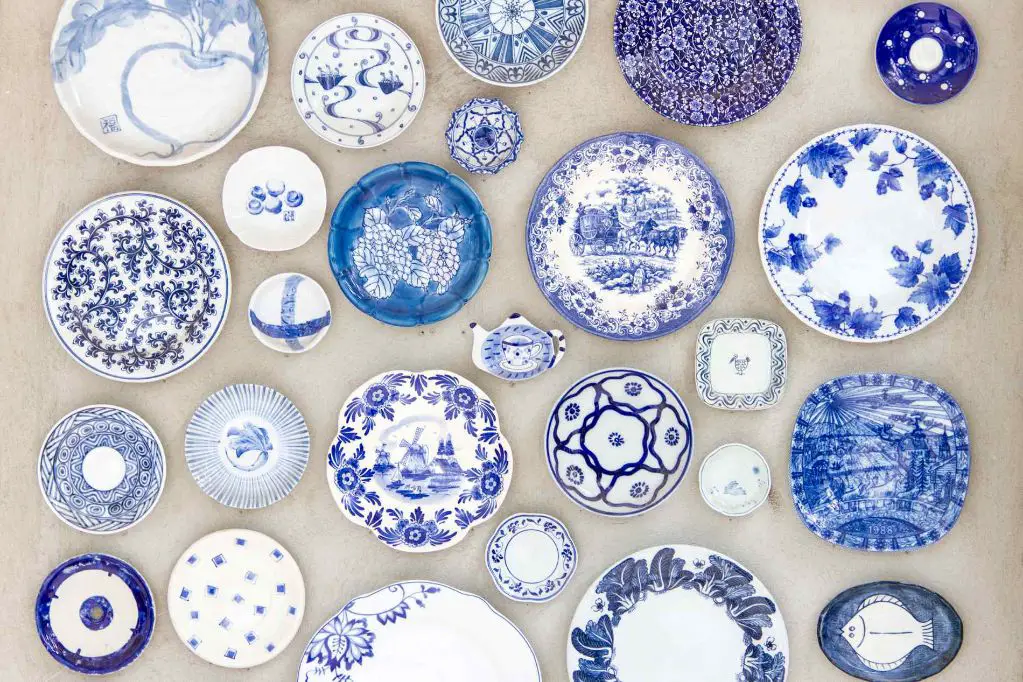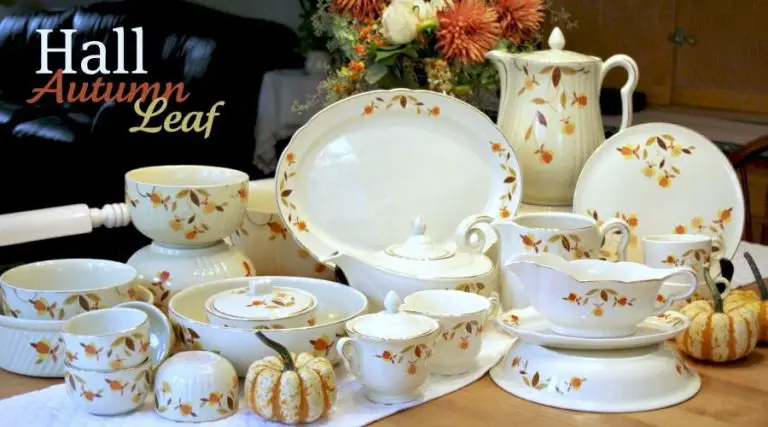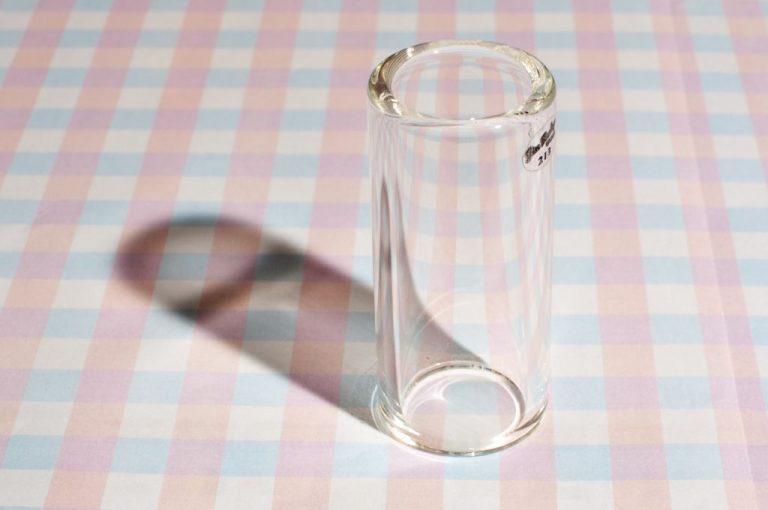Is Porcelain Just Clay?
What is Porcelain?
Porcelain is a ceramic material made by heating materials like kaolin, quartz, and feldspar to extremely high temperatures. It originated in China almost 1400 years ago during the Tang Dynasty, between 618-907 AD. Porcelain’s unique qualities come from the mixture of clays called kaolin that make it vitreous and impermeable. This allows it to be bright, hard, fine-grained, and very white after firing. Porcelain has high strength, low porosity, and can be molded into thin shapes. It became known as “white gold” and was very rare and desirable in Europe when first imported from China in the 1600s.
Porcelain Composition
Porcelain is composed of three main ingredients: kaolin clay, feldspar, and quartz. Each ingredient plays an important role in the chemical and physical properties of porcelain.
Kaolin clay, also known as China clay, is a white and very pure clay that provides porcelain with its plasticity. The clay allows porcelain to be molded into various shapes before firing. Kaolin clay also gives porcelain its white color and strength after firing at high temperatures. The chemical composition of kaolin clay is hydrated aluminum silicate (Al2O3·2SiO2·2H2O).
Feldspar acts as a flux in porcelain. It lowers the vitrification temperature of porcelain, allowing the material to fuse and become non-porous at lower firing temperatures. Feldspar promotes glass formation within the porcelain body. Chemical compositions of feldspars include potassium aluminum silicate (KAlSi3O8) and sodium aluminum silicate (NaAlSi3O8).
Quartz is added to prevent shrinkage and shape distortion during firing. It enhances the strength and durability of the fired porcelain. Quartz has a chemical composition of silicon dioxide (SiO2).
Together, these three ingredients create the unique properties of porcelain through vitrification and sintering during the firing process. The kaolin clay, feldspar, and quartz transform into a new crystalline ceramic material that is non-porous, hard, and translucent.
How Porcelain is Made
The manufacturing process for porcelain is very meticulous and consists of three main steps: mixing the ingredients, molding/shaping the porcelain, and firing.
First, the raw materials are blended together. Porcelain is typically composed of kaolin clay, feldspar, quartz, and water [1]. The kaolin clay gives porcelain its white color and plasticity for molding. Feldspar acts as a flux to lower the firing temperature and allows the porcelain to vitrify. Quartz provides additional strength. These raw materials are finely ground and mixed with water to make a slurry.
Next, the porcelain slurry is shaped and molded using techniques like throwing, slipcasting, or pressing into molds. Throwing involves shaping the porcelain on a pottery wheel. Slipcasting involves pouring the liquid porcelain into porous plaster molds to let it harden. Pressing uses mechanical force to push the porcelain into molds.
After molding, the shaped porcelain goes through an intricate firing process. It is fired at extremely high temperatures between 1200-1400°C to fully vitrify and strengthen it [2]. The firing process includes multiple steps of preheating, firing, and cooling over several days.
Through this demanding manufacturing process of mixing, molding, and firing, the raw materials are transformed into delicate yet durable porcelain.
Types of Porcelain
Porcelain can be categorized into two main types based on the materials used: hard-paste and soft-paste [1]. Hard-paste porcelain is made from kaolin clay and petuntse, fired at very high temperatures above 1,200°C. Soft-paste porcelain contains bone ash, limestone, and glass, fired at lower temperatures around 1,100°C. Hard-paste is considered higher quality and more durable.
One of the most well-known types of soft-paste porcelain is bone china. Bone china contains at least 30% bone ash, which gives it a very white, translucent appearance. The bone ash makes it more lightweight and durable than hard-paste porcelain. Bone china is commonly used for fine china dinnerware and teaware due to its delicate, refined aesthetics.
Porcelain has many usage types depending on its properties. Tableware like plates, bowls, and teacups make use of its low porosity, hardness, and whiteness. Electrical porcelain is used as insulators due to its high electrical resistance. Sanitaryware like sinks and toilets leverage porcelain’s impermeability and stain resistance. Technically advanced porcelain is also used in dental crowns, spark plugs, and more.
Porcelain Properties
Porcelain is known for its unique physical and chemical properties that set it apart from other types of pottery and ceramics. Some of the key properties of porcelain include:
Non-porous and vitreous: Porcelain has very low porosity, meaning it is dense and impermeable to water. This is due to porcelain’s vitreous quality, where it becomes glass-like when fired at very high temperatures. The lack of pores makes porcelain resistant to staining and penetration by liquids.Holst-Porzellan
Highly resistant to staining and breaking: In addition to being non-porous, porcelain’s hardened glass-like structure makes it very durable and resistant to chipping, cracking, and breaking. It does not easily scratch or stain.
Translucent when thin: High quality porcelain can become translucent when fired and shaped into thin pieces. The translucency allows light to pass through, creating a delicate, refined appearance.

Porcelain vs Stoneware
Porcelain and stoneware are two types of pottery made from clay and hardened by firing in a kiln. While they share similarities, there are some key differences between porcelain and stoneware:
Porcelain is fired at higher temperatures, typically between 2,200°F and 2,500°F. According to https://connormcginnstudios.com/blogs/guides/stoneware-vs-porcelain, stoneware is fired at lower temperatures between 2,000°F and 2,200°F.
The higher firing temperature makes porcelain less porous and denser than stoneware. Porcelain’s non-porous quality makes it more stain and water resistant. As noted on https://www.emilamerica.com/magazine/porcelain-or-stoneware-here-are-all-differences-and-advantages/, liquids can seep into stoneware’s more porous body.
Porcelain vs Bone China
Bone china is a type of porcelain that contains bone ash as an additive. The bone ash, which is made by calcining animal bone, makes bone china more translucent and gives it greater whiteness than conventional porcelain (Source).
The addition of bone ash results in some key differences between porcelain and bone china:
- Bone china has a higher level of translucency and brightness than normal porcelain due to the bone ash additive (Source).
- Bone china is thinner and more delicate than porcelain. Porcelain is denser and heavier.
- The thinner bone china requires specialized handling during manufacturing to prevent cracking or warping.
- Bone china has a smoother surface and finer details than porcelain.
- Porcelain is more durable for everyday use, while bone china is more decorative and artisanal.
In summary, the addition of bone ash gives bone china a more delicate, translucent aesthetic compared to porcelain, making it highly valued for formal dinnerware and collectibles.
Notable Porcelain Manufacturers
Porcelain has been produced for centuries in various parts of the world, with some of the most notable porcelain manufacturers based in China, Japan, and Europe.
Some of the oldest and most renowned Chinese porcelain brands include Jingdezhen, Dehua, and Yixing. Jingdezhen, located in Jiangxi province, has been considered the porcelain capital of China for over a thousand years, producing beautiful blue and white porcelain as well as stunning red and colored glazes. Dehua porcelain, made in Fujian province, is known for its milky white color and delicate artistry. Yixing in Jiangsu province produces the iconic purple clay teapots.
In Japan, brands like Noritake, Kakiemon, and Arita are world famous for their high quality porcelain with exquisite Japanese motifs. Noritake is one of the largest porcelain makers, known for both dinnerware and elaborate decorative pieces. Kakiemon is considered one of the oldest Japanese porcelain brands, making elegant hand-painted wares. Arita originated Japan’s renowned Imari style of blue and white export porcelain.
Prominent European porcelain makers include Meissen in Germany, a leading early innovator that developed pioneering techniques, Royal Copenhagen in Denmark, known for its whimsical figurines and classic dinnerware patterns, and Royal Doulton in England, renowned for its tableware and character jugs.
Other notable manufacturers worldwide include Herend in Hungary, famous for its ornate hand-painted porcelain, Baccarat in France, prized for its exquisite crystal stemware, and Wedgwood in England, that pioneered bone china and lavish jasperware.
Collectible Porcelain
Porcelain has been highly coveted and collected for centuries. Some of the most valuable and sought-after porcelain includes:
Antique Chinese Porcelain
Chinese porcelain has been produced for over 2,000 years and was highly valued in Europe ever since it was first imported in the Middle Ages. Antique Chinese porcelain from the Ming Dynasty and earlier reigns is especially prized by collectors. Famous examples include fine blue and white porcelain from the 14th century Yuan dynasty, elegant celadon wares from the Song dynasty, and the luxurious famille rose and famille verte styles popularized during the 18th century Qing dynasty.
Limited Edition Art Porcelain
In more modern times, many porcelain manufacturers have collaborated with artists and designers to produce limited edition porcelain pieces that are as much art as they are dishware. Some of the most acclaimed art porcelain includes those from Manufacture nationale de Sèvres in France, Nymphenburg Porcelain Manufactory in Germany, and the Gardner Porcelain factory founded in the USA. The intricate painting, gilding, and molding of these artistic porcelains make them highly desirable collector’s items.
Porcelain in Modern Life
Porcelain continues to play an important role in modern society. Its unique properties make it well-suited for a variety of applications.
In industry, porcelain is commonly used for insulators, laboratory equipment, and electrical components due to its high resistance to electricity and chemical corrosion (Home decor – how porcelain.com). It also sees use in dentistry for crowns, bridges, and orthodontic brackets.
In homes, porcelain remains a popular material for dishes, mugs, vases and other decorative items. Many appreciate porcelain for its smooth surface, durability, and ability to withstand frequent use and cleaning. Fine porcelain from renowned manufacturers is also highly valued as a collector’s item.
Porcelain continues to influence art as well. Porcelain figurines remain a craft in many cultures. Some artists also use broken or smashed porcelain shards for mosaics and collages. Porcelain’s translucent qualities also make it an appealing canvas for painted artwork.
While plastics and other modern materials displace porcelain in some utilitarian uses, true porcelain maintains an enduring appeal and place in daily life.


